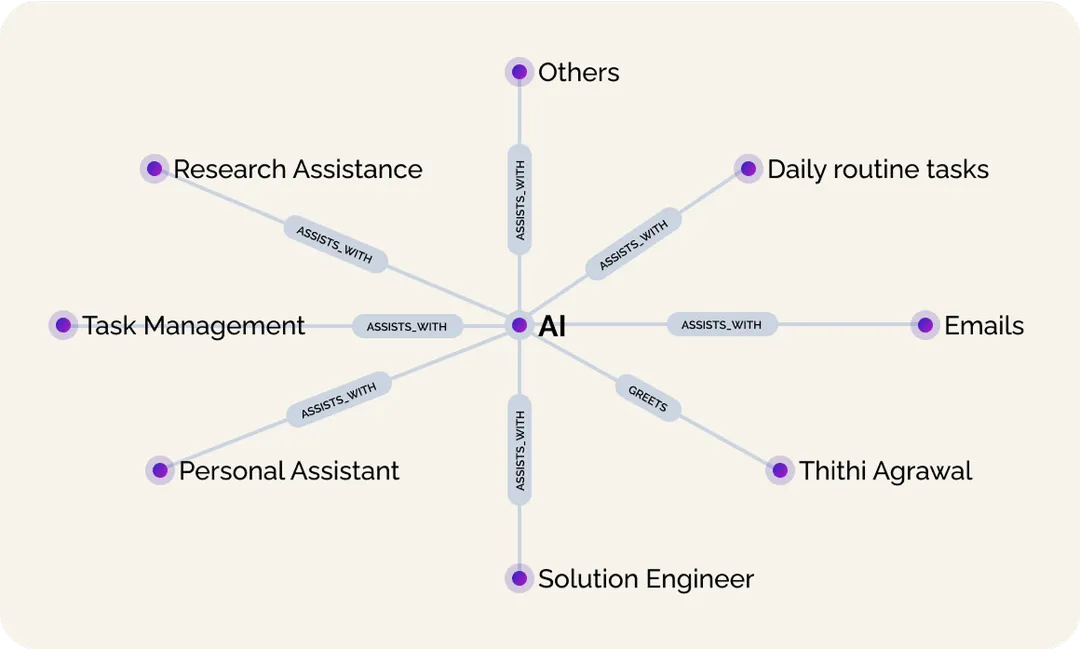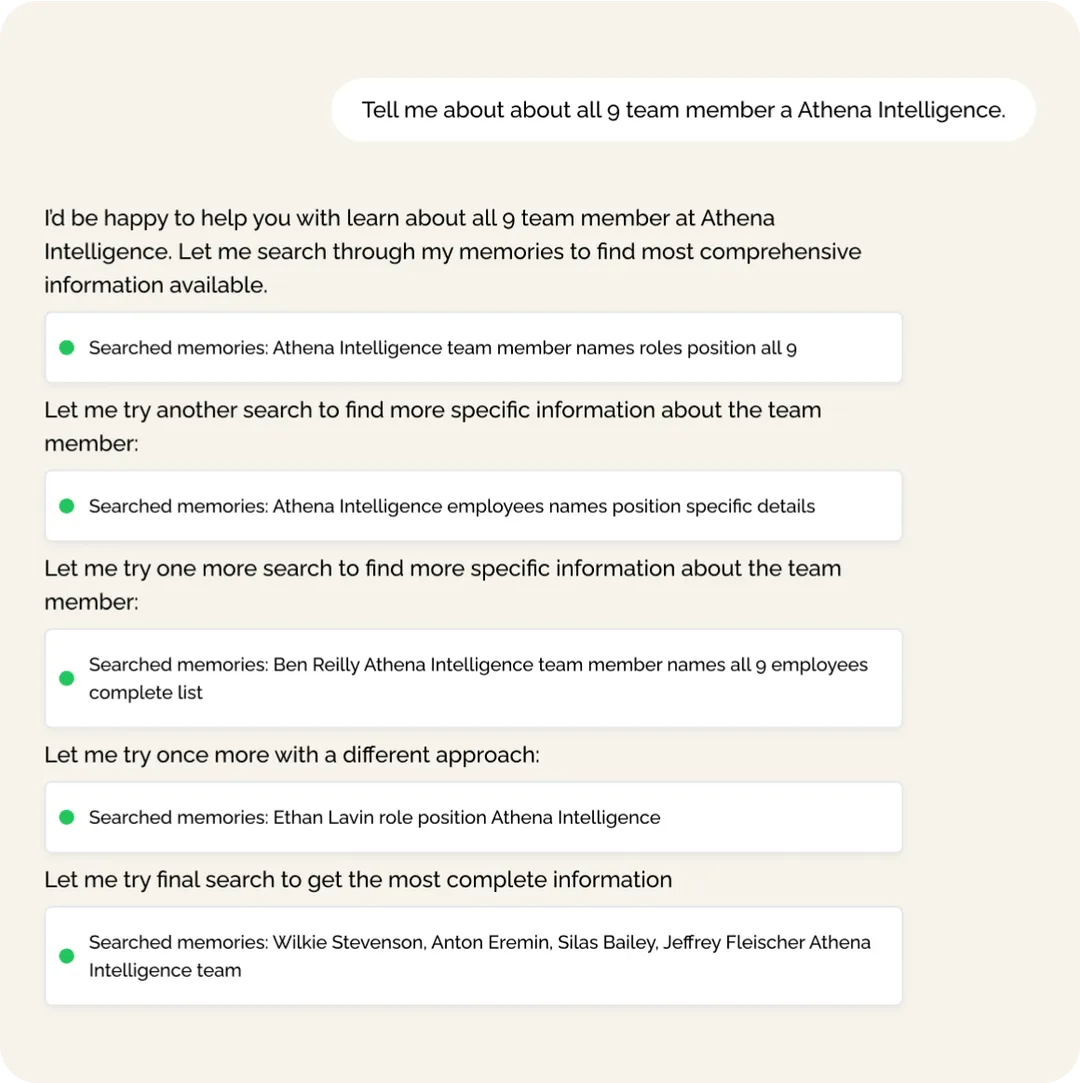Pioneering Autonomous AI for High-Stakes Decision-Making
Athena Intelligence creates AI agents that adapt and excel in high-stakes decision-making across finance, healthcare, and enterprise.
Athena Intelligence was founded with the vision of developing autonomous AI agents capable of high-stakes decision-making across finance, healthcare, and enterprise domains. Their focus on dynamic adaptation and human-like expertise interaction sets them apart in the competitive AI landscape, requiring sophisticated context engineering to maintain context across complex workflows.
Results and Performance Gains
Based on Athena's internal evaluation of Tia's performance after integrating Zep
increase in contextual response accuracy
reduction in repeated user input
reduction in redundant task handling
Scalable context retention with knowledge graph expanding to over 160 nodes and 220 edges in under three hours.
The Technical Team Driving Innovation
Key Team Members:
- • Brendon Geils (Founder)
- • Ben Reilly (Founding Platform Engineer)
- • Wilkie Stevenson (Platform Engineer)
Core Product: Tia - AI-powered assistant for complex workflows
Main Challenge: Tia had no persistent context, requiring users to reintroduce information continuously
Technical Challenges in Building Autonomous AI Agents
Users Had to Repeat Themselves Constantly
Every time a user returned to Tia, they had to re-explain their portfolio preferences, risk tolerance, and decision criteria—even after discussing it multiple times before.
Static Data Couldn't Keep Up
Traditional vector search returned outdated information. When market conditions or client situations changed, Tia couldn't adapt—leading to irrelevant or incorrect recommendations.
Too Much Noise, Not Enough Signal
Tia retrieved too many irrelevant facts while missing critical context. The team spent weeks tuning retrieval but couldn't get the right information to surface reliably.
Visualizing Context Engineering in Action
This visualization shows how episodic interactions are captured, structured, and linked for persistent context. Zep's temporal knowledge graph construction enables Tia to maintain comprehensive context across all user interactions.

Why Athena Chose Zep Over Building In-House
The team evaluated building their own context layer but chose Zep to ship faster and focus on their core product.
Context That Evolves Over Time
Zep's temporal knowledge graph tracks how user preferences and situations change. When a client's risk tolerance shifts or priorities evolve, Tia understands the current state—not just what was true six months ago.
Right Context, Right Time
A single API call retrieves exactly the context Tia needs for each interaction. No more tuning retrieval pipelines or filtering through irrelevant results—Zep handles the complexity.
Automatic Knowledge Updates
New information integrates into the knowledge graph in real-time. When market conditions change or new client data arrives, Tia immediately has access to the updated context.
Integration in Days, Not Months
API calls to add context to any agent interaction
From integration start to production deployment
Custom retrieval infrastructure to maintain

Leveraging Custom Entity Types
Integration of custom entity types (Person, Company) enables structured, domain-specific knowledge representation. This approach allows Tia to understand relationships and context in ways that are meaningful for high-stakes decision-making scenarios.
Conclusion
Zep's context engineering has transformed Athena Intelligence's autonomous AI agents, enabling them to maintain context, adapt dynamically, and excel in high-stakes decision-making scenarios. The results speak for themselves: dramatic improvements in accuracy, efficiency, and user experience.